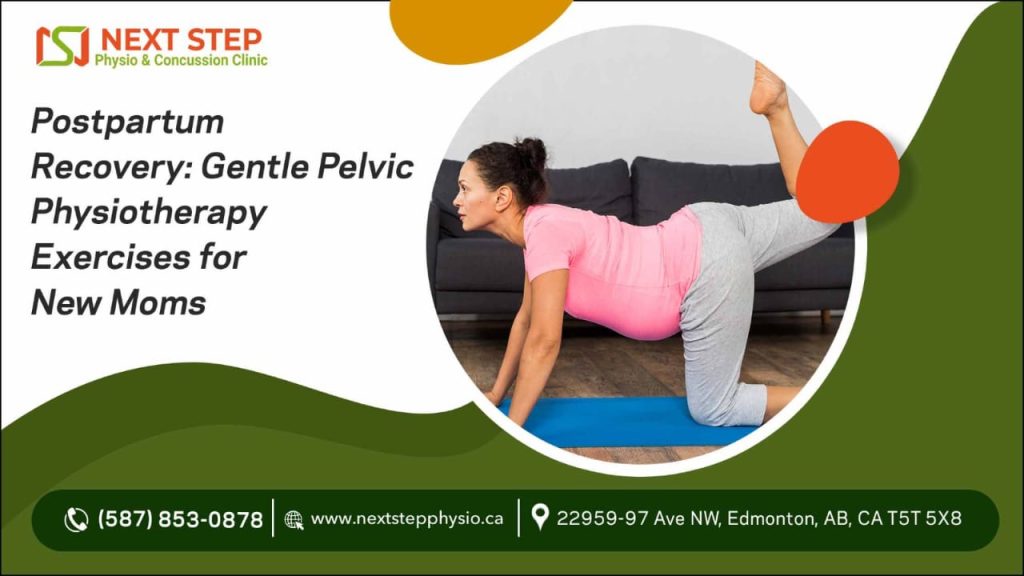
Pelvic floor physiotherapy focuses on the muscles, ligaments, and connective tissues in the pelvic area and plays a vast role in providing support to the organs situated within the pelvis, which include the bladder, uterus, and rectum. Pelvic floor physiotherapy in Edmonton aims to assess, treat, and rehabilitate various conditions related to dysfunction or weakness in these muscles.
Postpartum Recovery:
After childbirth, the body goes through various physical changes as it heals from the effects of pregnancy and childbirth. This may include:
- Uterine involution: The uterus gradually contracts back to its pre-pregnancy size over the first few weeks after childbirth.
- Vaginal healing: If the woman had a vaginal delivery, the vaginal tissues may be swollen, bruised, or torn and require time to heal.
- Cesarean incision healing: Women who undergo a cesarean section (C-section) will have an incision in the abdominal wall that needs to heal properly.
- Perineal healing: The perineum, the region located between the vagina and anus, might experience soreness or tenderness, especially if there is tearing or an episiotomy during childbirth.
- Emotional Well-being: The postpartum period is challenging due to adjusting to motherhood, hormonal changes, and caring for a newborn, potentially leading to mood disorders.
- Pelvic Floor Recovery: Pregnancy and childbirth can result in the weakening of pelvic floor muscles, leading to issues like incontinence or pelvic pain. Pelvic floor exercises and physiotherapy aid in recovery.
Pelvic Physiotherapy Exercises for New Moms:
Pelvic floor physiotherapy in Edmonton helps to strengthen, stabilize, and promote flexibility in the pelvic floor and surrounding muscles, aiding in postpartum recovery for new moms. Here are some pelvic health physiotherapy exercises tailored for new moms:
Pelvic Floor Contractions (Kegels):
Kegel exercises, also called pelvic floor contractions, are a cornerstone of postnatal recovery for new mothers. These exercises work to restore strength, tone, and control to muscles weakened by pregnancy and childbirth. Starting with short holds and gradually increasing duration and intensity is crucial for effectiveness, with guidance from a pelvic floor physiotherapist ensuring proper technique and tailored progression.
Here is a guide to perform the exercise:
- Sit, stand, or lie down comfortably.
- Engage your pelvic floor muscles as if you’re attempting to halt the flow of urine.
- Maintain for a count of 3-5 seconds, then release.
- Repeat 10-15 times, gradually increasing the duration of the holds as your strength improves.
Pelvic Tilts:
These target the muscles of the lower back, abdomen, and pelvis, which can be weakened during pregnancy and childbirth. Pelvic tilts help to gently strengthen and stabilize these muscles while also promoting flexibility and proper alignment of the pelvis. The controlled movement of tilting the pelvis upward during exhalation and returning to the starting position during inhalation engages the core and pelvic floor muscles.
- Recline with your knees bent and feet flat on the floor.
- As you inhale to prepare, gently tilt your pelvis upward while exhaling, pressing your lower back into the floor.
- Inhale to return to the starting position.
- Repeat 10-15 times, focusing on controlled movements.
Pelvic Clocks:
Pelvic clocks promote awareness, mobility, and strength in the pelvic region, which can be affected by pregnancy and childbirth. This exercise helps to increase flexibility, improve circulation, and alleviate tension in the pelvic floor muscles. By repeating the movements several times, postpartum women can enhance pelvic stability, support pelvic organ function, and promote overall pelvic health during the recovery process.
- Perch on a stability ball or chair with your feet planted firmly on the floor.
- Visualize your pelvis as the center of a clock.
- Slowly tilt your pelvis forward (towards 12 o’clock), then to the right (towards 3 o’clock), backward (towards 6 o’clock), and to the left (towards 9 o’clock).
- Repeat for several repetitions, focusing on gentle, controlled movements.
Side-Lying Leg Lifts:
Side-lying leg lifts are a beneficial exercise in postpartum recovery for new mothers as they target the muscles of the hips, thighs, and pelvic floor, which may have been weakened or overstretched during pregnancy and childbirth. Regular practice of side-lying leg lifts can aid in improving hip strength, enhancing pelvic floor support, and restoring overall pelvic stability, contributing to a smoother recovery process for postpartum women.
- Recline on your side with your hips and knees bent.
- Keep your top leg straight and lift it towards the ceiling, engaging your outer hip muscles and pelvic floor.
- Hold briefly, then lower back down.
- Repeat 10-15 times on each side.
Empowering New Moms:
Pelvic floor physiotherapy in Edmonton offers new moms a tailored and effective approach to postpartum recovery and pelvic health. By addressing issues such as pelvic pain, urinary incontinence, and pelvic organ prolapse, Next Step Physiotherapy in Edmonton empowers new mothers to regain strength, function, and confidence in their bodies. By prioritizing pelvic health, new moms can optimize their general welfare and facilitate a more seamless transition into this transformative stage of life. With the guidance of a physiotherapist of female pelvic floor physiotherapy, new moms can embark on a journey of healing, strength, and empowerment, setting the foundation for a vibrant and fulfilling postpartum experience.

